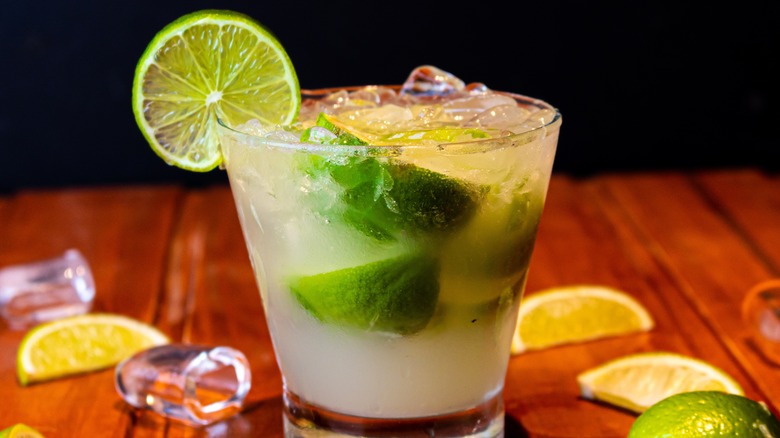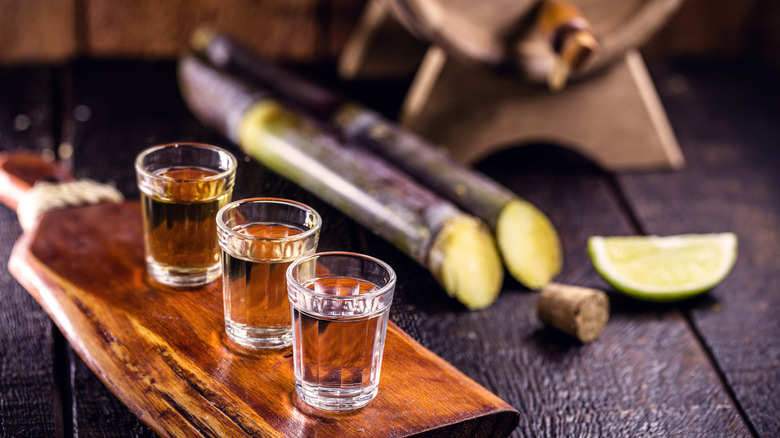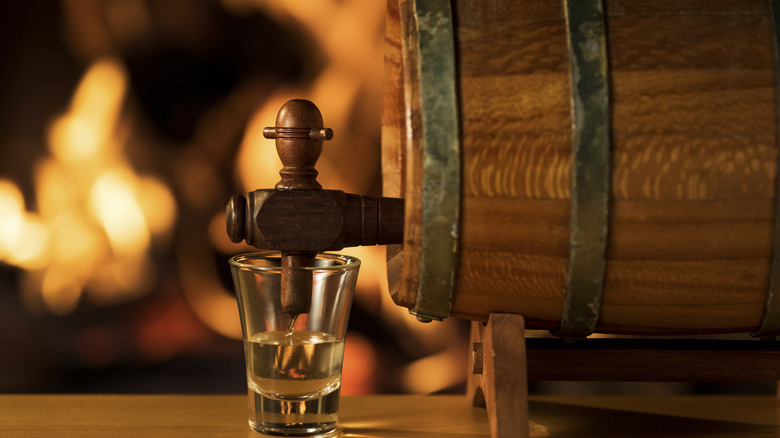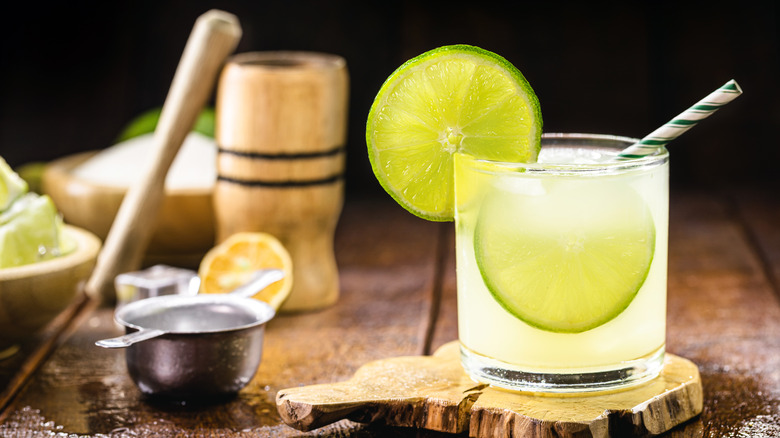Brazil's National Drink, Caipirinha, Features A Historic Spirit
Who doesn't love a refreshing cocktail birthed in the homeland of Rio Carnival and the Amazon Rainforest? The intrigue is only magnified by its exclusive rum-relative spirit made only in Brazil. If you haven't guessed already, that would be the caipirinha cocktail and its cachaça liquor base.
To call a caipirinha refreshing is a bit of an understatement though. Its back-to-nature simplicity comes from perky fresh limes, fine-granulated cane sugar, and the requisite cachaça alcohol. That's it. Original or customized versions of the cocktail now crop up on international bar menus, but it's far from being a fly-by-night newcomer.
The caipirinha, Brazil's national drink, gets its energy from times gone by when the cachaça spirit reportedly emerged from fledgling 1500s-era Brazilian distilleries. The methods, taste, and composition of cachaça remain distinct from other alcohols, even similar sugar- or molasses-based ones such as the often-compared rum.
That makes for tasty cachaça and caipirinha cocktail treats with a fascinating past.
Cachaça and caipirinha: where it all began
There's no caipirinha cocktail without cachaça liquor, and both have stories to tell.
Sugar became big business in Brazil after Portuguese merchants brought sugarcane from other colonized islands, turning Brazil into the largest sugar supplier in the world. History, by some accounts, gives credit for cachaça invention to enslaved peoples toiling in Brazilian sugarcane fields and mills of the early 16th century. Cachaça eventually became a relatively inexpensive drink initially known as "pinga."
The centuries-old cachaça spirit, a Brazilian creation through and through, eventually gave birth to the acclaimed caipirinha cocktail. Some point to a marketing push by Brazilian sugar farmers and distillers in the 1800s, who sought to popularize cachaça for pleasure drinking. But by the 1900s, the caipirinha was apparently being touted for its assumed medicinal properties.
One account ties early caipirinha cocktails to the 1918 flu pandemic, which infected about 500 million people across the globe, causing at least 50 million deaths. This reported version of a caipirinha utilized green lemons (a Brazilian citrus similar to the more universal lime), which provided beneficial amounts of vitamin C, along with garlic and honey.
The now well-known modern caipirinha ditches the garlic and relies on cane sugar instead of honey. And the process of making one has been refined, bringing it down to a very basic yet crucial technique.
Cachaça: How it's made and how it tastes
The mysterious cachaça liquor seems elusive because it's so localized, and it's surprisingly still made by Brazilian distillers of all stripes, both small and large. Estimates vary widely, but some surmise up to 40,000 legal ones and an untold number of bootleggers.
Production standards for commercially sold cachaça protect the brand's originality and earthy, sweet, grass-like flavors. The important thing distinguishing cachaça from rum is that it must be made in Brazil from pure fermented sugar cane juice instead of molasses, which is a byproduct spawned from processing the cane. It's also required to use a single distillation and results in a minimum of 40% alcohol by volume (ABV.)
Cachaça can vary based on how it's aged, some being packaged soon after distillation and others aging in wooden barrels for up to five years. Some family distillers lean toward a purist approach, using aged barrels in which the wood rarely affects the outcome. Others, however, are broadening the taste range by experimenting with various types of indigenous Brazilian woods, which can impact everything from the final cachaça's color, acidity, alcohol level, and notable aromas such as floral, cinnamon, vanilla, clove, and more.
Creating the classic caipirinha
With all that loving attention going into making Brazilian cachaça, you want the final in-glass cocktail to do it justice. Fortunately, creating the caipirinha cocktail is very straightforward. But little nuances make all the difference.
First of all, most bartenders and liquor aficionados stick to the "no sugar syrups" approach when it comes to a caipirinha. The real-deal granulated cane sugar is a must, preferably finely granulated to help absorb the coveted cachaça flavor. Next up is the citrus. If you're lucky enough to access Brazilian green lemons, all power to you. Most of us, however, will use equally pucker-perfect limes. After that, it's just the cachaça forming the triple-delicious caipirinha cocktail concoction.
As Tasting Table recipe developer Christina Musgrave explains, "It's only three ingredients and super easy, but has a ton of flavor." She also notes the citrusy double sweetness, given the cachaça itself contains sugar cane juice, and the cocktail recipe piles it on with a second sugar infusion.
Caipirinha recipes can vary but generally require slicing the limes into wedges and then muddling them with the sugar. Musgrave's recipe, per drink, calls for two wedge-cut limes and two teaspoons of sugar muddled together inside the glass, then topped with two ounces of cachaça. There's no need to remove the lime wedges — they'll happily swim along for the fun.
Now, just fill it with crunchy crushed or cubed ice, give it a healthy stir, and enjoy that taste of Brazilian culture and ingenuity.



